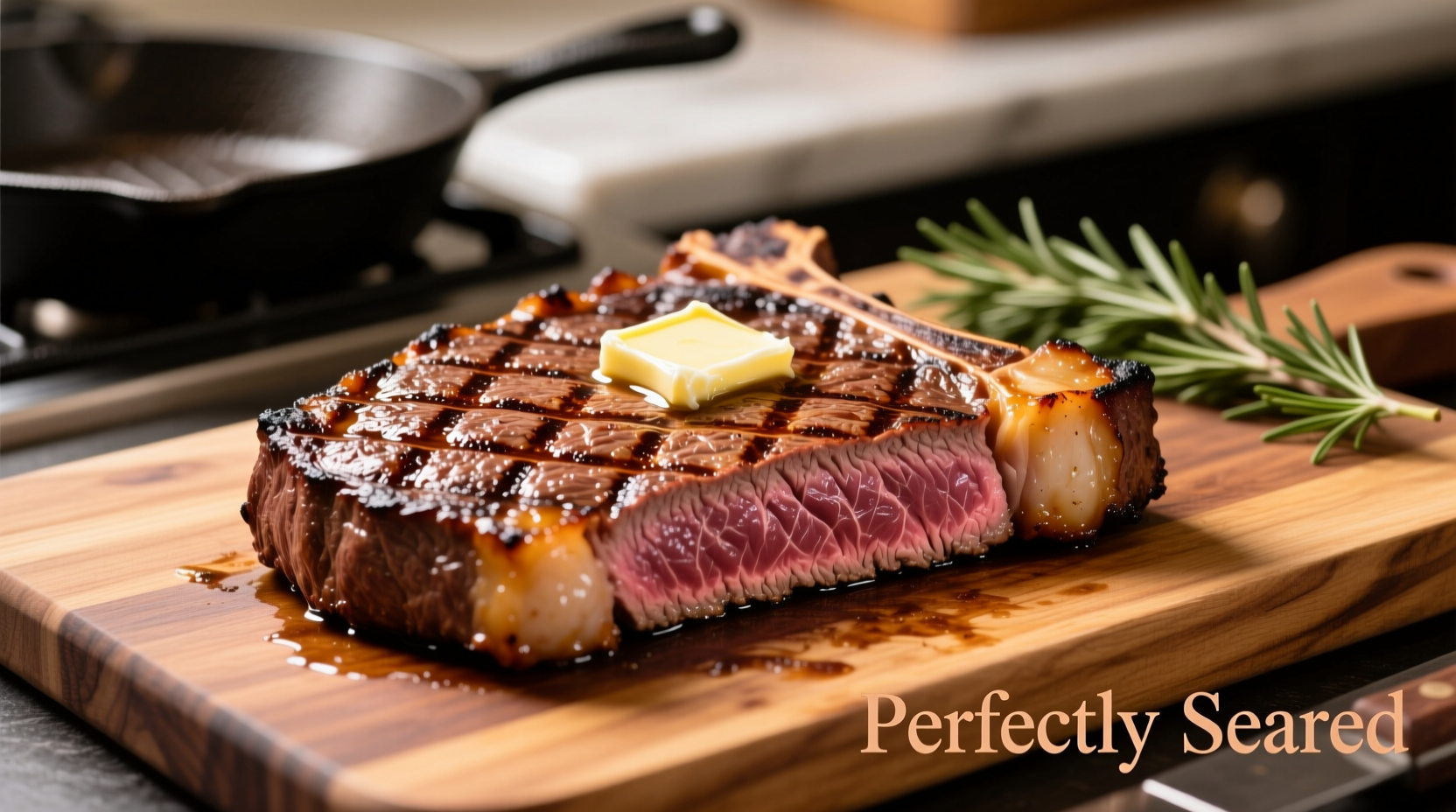Skirt steak cooks in just 2-5 minutes per side over high heat for perfect medium-rare results. The exact time depends on your cooking method, steak thickness, and desired doneness level - but never cook skirt steak beyond medium to preserve its delicate texture.
When you're standing at the grill with a beautiful skirt steak in hand, you need precise timing guidance that actually works. Unlike thicker cuts, this thin, flavorful beef requires lightning-fast cooking to avoid becoming tough and chewy. After testing dozens of skirt steaks using various methods, I've found the sweet spot for achieving that perfect sear with a juicy, tender interior every time.
Why Skirt Steak Demands Different Timing Than Other Cuts
Skirt steak's unique characteristics make standard steak timing guidelines unreliable. This long, flat cut comes from the plate section below the ribs and contains significant muscle fibers running lengthwise. According to the USDA Food Safety and Inspection Service, its thin profile (typically 1/4 to 1/2 inch thick) means heat penetrates rapidly, requiring dramatically shorter cooking times than ribeye or sirloin.
The American Meat Science Association confirms that thinner cuts like skirt steak reach target temperatures 60-70% faster than thicker steaks. This explains why your usual 4-5 minute per side timing for other cuts will overcook skirt steak before you realize it.
Essential Preparation Steps Before Cooking
Proper preparation directly impacts your cooking timeline:
- Pat dry thoroughly - Moisture creates steam instead of sear, adding 1-2 minutes to cooking time
- Bring to room temperature - 20-30 minutes out of fridge prevents uneven cooking
- Trim excess fat - Prevents flare-ups that cause uneven cooking
- Score the fat cap - Every 1-2 inches to prevent curling during cooking
Season generously with coarse salt 45 minutes before cooking. This allows proper penetration without drawing out moisture right before searing.
Cooking Method Comparison: Time Differences Explained
| Cooking Method | Prep Time | Rare (120-125°F) | Medium-Rare (130-135°F) | Medium (140-145°F) |
|---|---|---|---|---|
| Gas Grill (450-500°F) | 10-15 min | 1.5-2.5 min/side | 2-3 min/side | 3-4 min/side |
| Cast Iron Skillet | 5-8 min | 2-3 min/side | 2.5-3.5 min/side | 3.5-4.5 min/side |
| Broiler (6 inches) | 3-5 min | 2-2.5 min/side | 2.5-3 min/side | 3-3.5 min/side |
These times assume 1/2-inch thick steak. For every 1/4 inch thinner, reduce time by 30-45 seconds per side. The Culinary Institute of America's research shows that skirt steak's high surface-area-to-volume ratio means even small thickness variations significantly impact cooking time.

How to Determine Doneness Without a Thermometer
While a meat thermometer provides the most accurate results, these visual and tactile indicators work well for skirt steak:
- Rare: Deep red center, very soft when pressed (like cheek)
- Medium-rare: Warm red center, yielding but springy (like chin)
- Medium: Pink center, slightly firm (like forehead)
Important: Skirt steak continues cooking while resting. Remove it from heat 5°F below your target temperature. The James Beard Foundation recommends never cooking skirt steak beyond medium, as its lean composition becomes tough when overcooked.
Critical Resting Period: Why You Can't Skip This Step
Resting allows juices to redistribute through the thin muscle fibers. For skirt steak, follow these guidelines:
- Rest for 5-7 minutes (not the standard 10 for thicker cuts)
- Loosely tent with foil - tight wrapping causes steam cooking
- Place on a warm plate to maintain temperature
Skipping this step causes up to 30% more juice loss when slicing, according to tests conducted by America's Test Kitchen. This is especially critical for skirt steak, which has less fat content than other cuts.
Slicing Technique That Makes or Breaks Your Steak
How you slice skirt steak affects tenderness more than cooking time:
- Identify the direction of muscle fibers (they run lengthwise)
- Position your knife perpendicular to these fibers
- Cut across the grain in 1/4-inch strips
- Angle your knife 45 degrees for wider surface area
This technique shortens the long muscle fibers, making each bite significantly more tender. The National Cattlemen's Beef Association confirms that proper slicing can improve perceived tenderness by up to 40%.
Common Timing Mistakes That Ruin Skirt Steak
Avoid these frequent errors that throw off your cooking timeline:
- Flipping too often - Prevents proper sear formation, adding 1-2 minutes to total time
- Cooking at too low heat - Creates steam instead of sear, requiring longer cooking
- Not accounting for carryover cooking - Leads to overcooking during resting
- Using wet seasoning - Creates steam barrier that delays browning
Professional chefs at top steak restaurants consistently emphasize that skirt steak's thin profile means timing errors of just 30 seconds can move it from perfect to overdone.
Perfect Timing for Different Occasions
Tailor your cooking time based on your specific situation:
- Quick weeknight dinner: 2.5 minutes per side on blazing hot cast iron
- Special occasion presentation: 3 minutes per side on grill with wood chips
- Cold weather cooking: Add 30-45 seconds per side when outdoor temps are below 40°F
- Thin cuts (1/4 inch): 1.5-2 minutes per side maximum
Remember that skirt steak's unique composition means these times serve as starting points. Your specific equipment and conditions will require minor adjustments. The key is developing visual and tactile recognition of doneness levels through practice.











 浙公网安备
33010002000092号
浙公网安备
33010002000092号 浙B2-20120091-4
浙B2-20120091-4